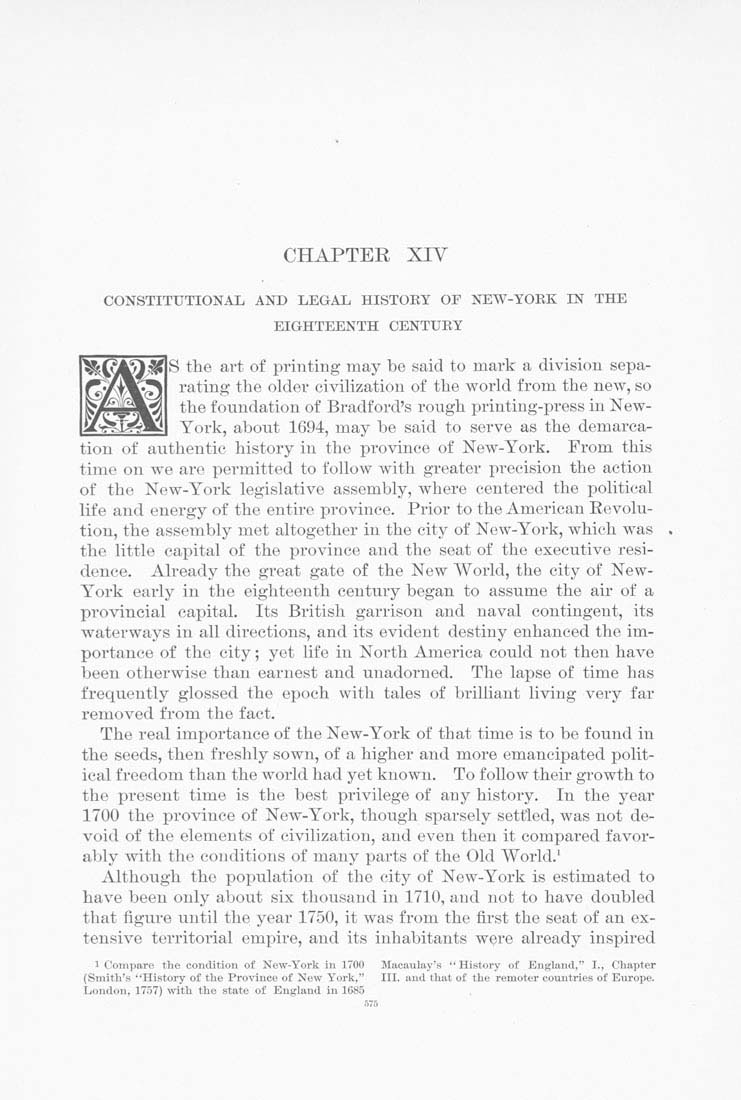CHAPTER XIY
CONSTITUTIONAL AND LEGAL HISTORY OF NEW-YORK IN THE
EIGHTEENTH CENTURY
8 the art of printing may be said to mark a division sepa¬
rating the older civihzation of the world from the new, so
the foundation of Bradford's rough printing-press in New-
York, about 1694, may be said to serve as the demarca¬
tion of authentic history in the province of New-York. From this
time on we are permitted to follow with greater precision the action
of the New-York legislative assembly, where centered the political
life and energy of the entire province. Prior to the American Revolu¬
tion, the assembly met altogether in the city of New-York, which was
the little capital of the province and the seat of the executive resi¬
dence. Already the great gate of the New World, the city of New-
York early in the eighteenth century began to assume the air of a
provincial capital. Its British garrison and naval contingent, its
waterways in all directions, and its evident destiny enhanced the im¬
portance of the city; yet life in North America could not then have
been otherwise than earnest and unadorned. The lapse of time has
frequently glossed the epoch with tales of brilliant living very far
removed from the fact.
The real importance of the New-York of that time is to be found in
the seeds, then freshly sown, of a higher and more emancipated polit¬
ical freedom than the world had yet known. To follow their growth to
the present time is the best privilege of any history. In the year
1700 the province of New-York, though sparsely settled, was not de¬
void of the elements of civilization, and even then it compared favor¬
ably with the conditions of many parts of the Old World.^
Although the population of the city of New-York is estimated to
have been only about six thousand in 1710, and not to have doubled
that figure until the year 1750, it was from the first the seat of an ex¬
tensive territorial empire, and its inhabitants were already inspired
1 Compare the condition of New-York in 1700 Macaulay's ^' History of England," I., Chapter
(Smith's ^^History of the Province of New York," III. and that of the remoter countries of Europe.
London, 1757) with the state of England in 1685
575
|








